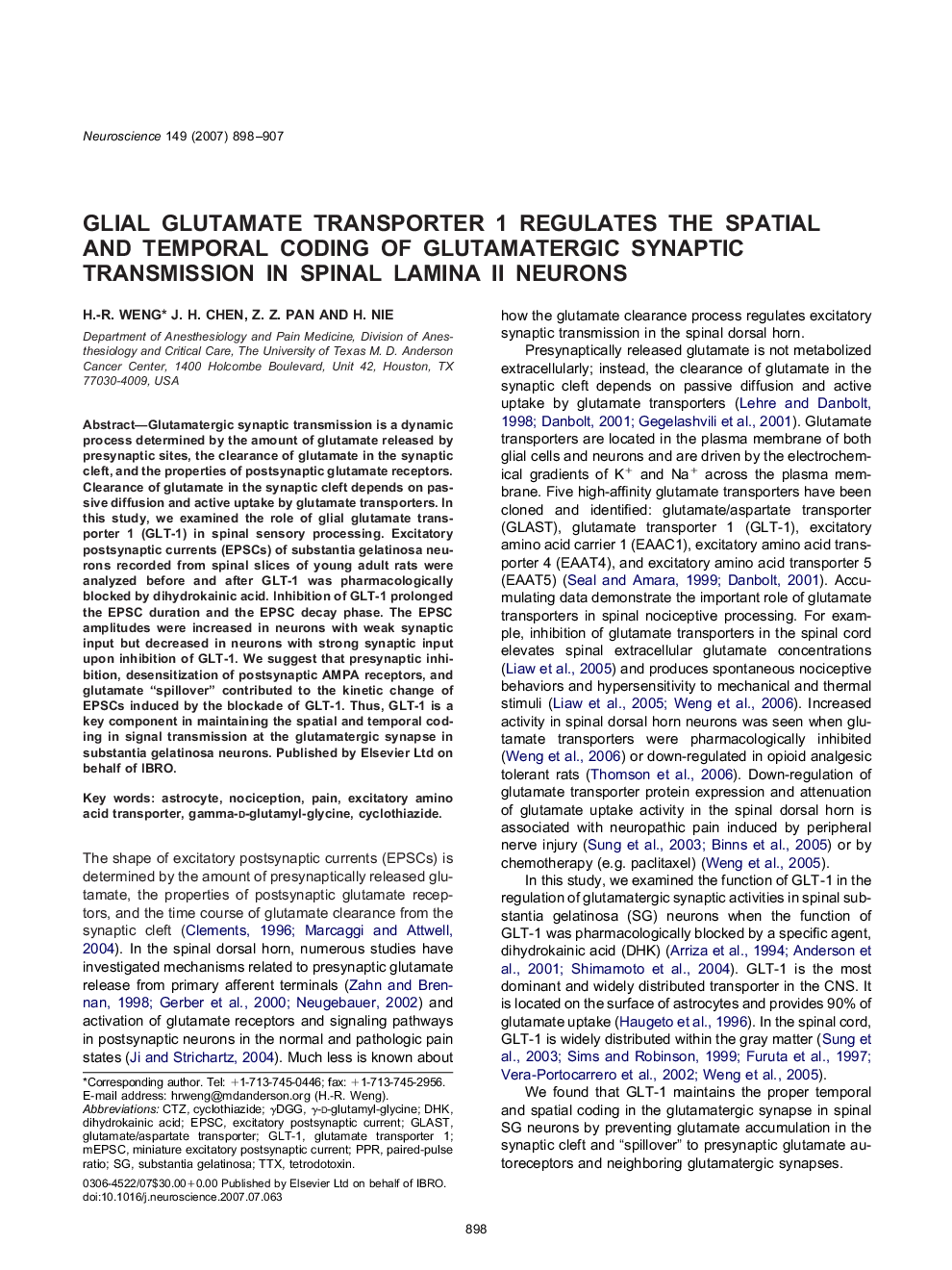| Article ID | Journal | Published Year | Pages | File Type |
|---|---|---|---|---|
| 4341398 | Neuroscience | 2007 | 10 Pages |
Glutamatergic synaptic transmission is a dynamic process determined by the amount of glutamate released by presynaptic sites, the clearance of glutamate in the synaptic cleft, and the properties of postsynaptic glutamate receptors. Clearance of glutamate in the synaptic cleft depends on passive diffusion and active uptake by glutamate transporters. In this study, we examined the role of glial glutamate transporter 1 (GLT-1) in spinal sensory processing. Excitatory postsynaptic currents (EPSCs) of substantia gelatinosa neurons recorded from spinal slices of young adult rats were analyzed before and after GLT-1 was pharmacologically blocked by dihydrokainic acid. Inhibition of GLT-1 prolonged the EPSC duration and the EPSC decay phase. The EPSC amplitudes were increased in neurons with weak synaptic input but decreased in neurons with strong synaptic input upon inhibition of GLT-1. We suggest that presynaptic inhibition, desensitization of postsynaptic AMPA receptors, and glutamate “spillover” contributed to the kinetic change of EPSCs induced by the blockade of GLT-1. Thus, GLT-1 is a key component in maintaining the spatial and temporal coding in signal transmission at the glutamatergic synapse in substantia gelatinosa neurons.
